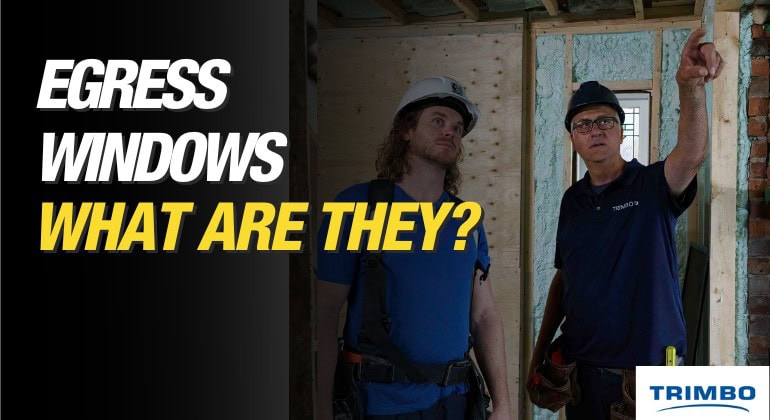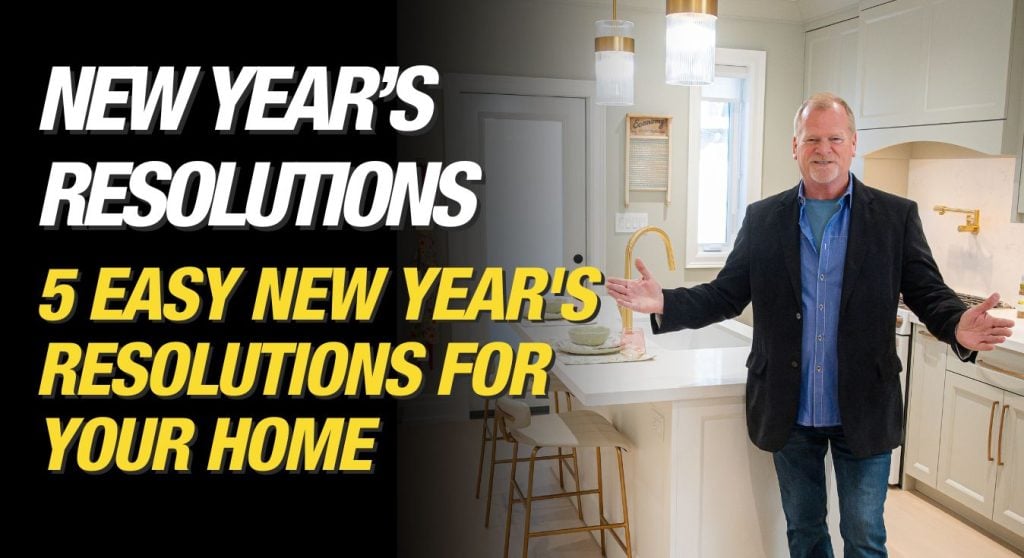When it’s time to replace your HVAC system, you have several options, each with its own benefits. Choosing the right HVAC system depends on your home’s size, climate, energy needs,...
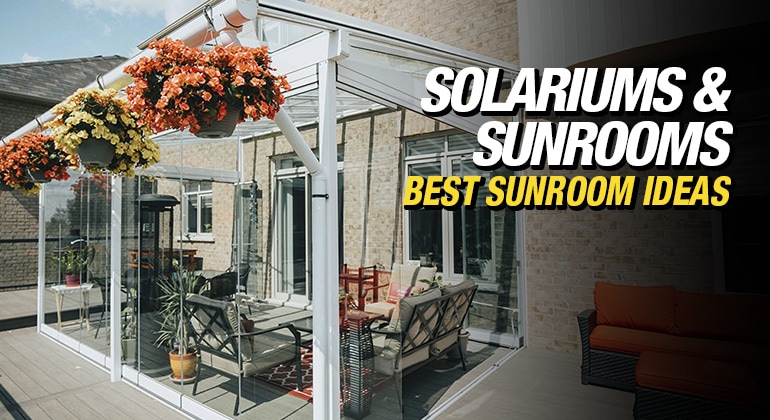
The Best Sunroom Ideas for Your Home
By Mike Holmes
Mike’s Advice / Design & Renovation Inspiration
Thursday, July 7th, 2022 @ 1:43pm
Sunroom Ideas To Inspire You
Sunrooms, solariums, and conservatories? Generally, these terms are interchangeable. They all mean a “sunroom”. Sunrooms, which are commonly converted porches, are also recreation areas. The only difference between a conservatory and a solarium is how you plan on using the space. A sunroom, unlike a conservatory or a solarium, is pretty much a room with wide windows rather than a glass building.
What is the Role of the Sunroom?
Sunrooms are an awesome way to get more sunlight in a relaxing extra living space. Sunrooms are also a great way to connect to nature, regardless of the weather. Dining in a sunroom is a great experience. You get to enjoy the outdoors while comfortably sitting indoors. They protect the space from bugs and insects.
Did you watch Frank’s project in Holmes Family Rescue? We renovated his sunroom so that it would be a space he can enjoy.
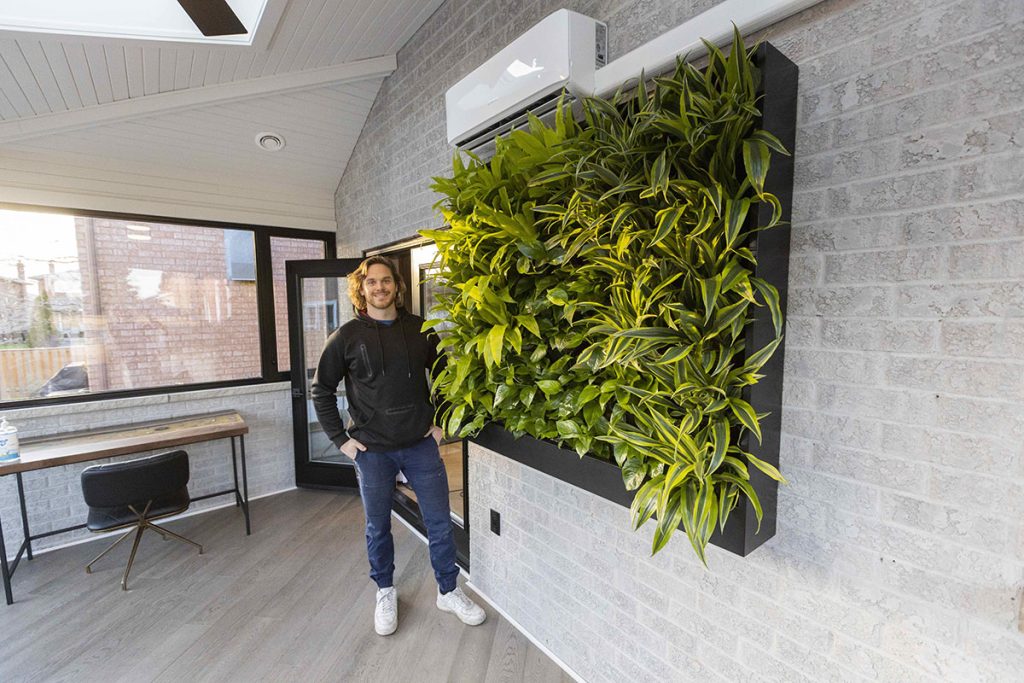
We introduced a “living wall” to Frank’s sunroom and added a Bosch mini-split so this room can be enjoyed all year long!
Typically, sunrooms need to be built on a concrete slab and are either three-season or four-season sunrooms. A four-season sunroom will feature some sort of HVAC system, which provides heating and cooling.
What is a Solarium?
A solarium, also known as a greenhouse or conservatory, is a type of glass-enclosed sunroom. A solarium is a room made up of a glass roof and walls. The purpose of all the glass in the structure is to capture as much light as possible while still protecting it from outdoor elements.
Solariums can either be freestanding or attached to the house and are typically built entirely of glass, except for the frame that holds these floor-to-ceiling windows in place. The frames are often built using vinyl, aluminum or wood.
For the holidays, I had a clear dome from Canada Lux installed on my property. I used it for holiday decor, but it can be used as a greenhouse, kid’s play area, dining area, or more.
RELATED:
What is the Difference Between a Three-Season and a Four-Season Sunroom?
Three-Season Sunroom
A three-season sunroom is intended to be used only during the spring, summer, and fall seasons. This is because they are not insulated from the cold weather. Three-season sunrooms are a great way to save money on your sunroom. Typically, they do not have a heat source and can become quite chilly in the colder seasons.
Four-Season Sunroom
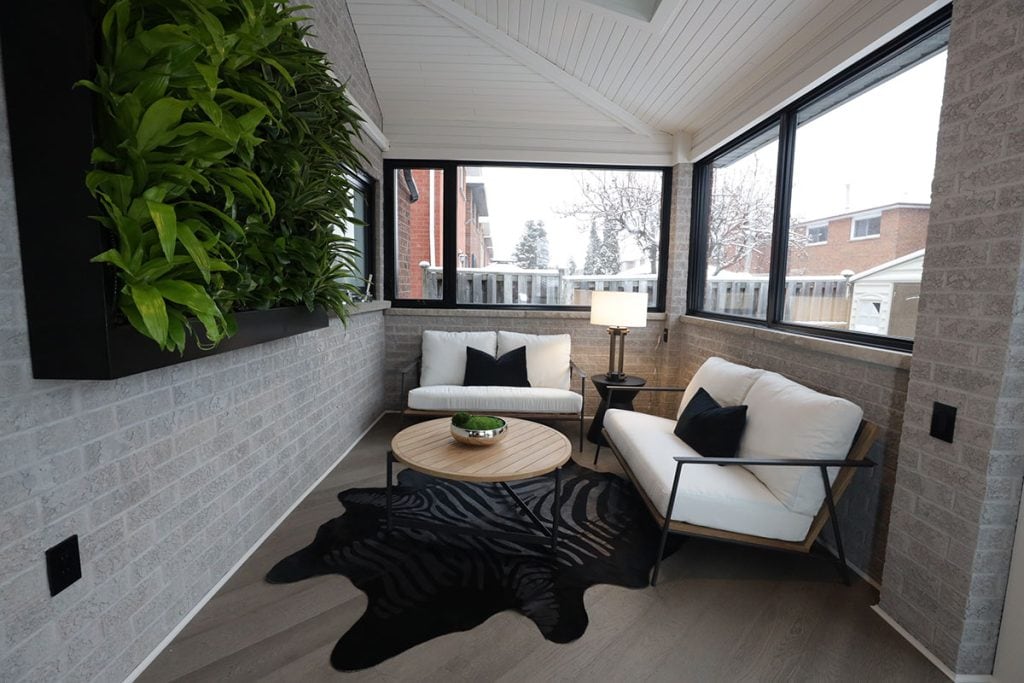
Frank’s sunroom is a 4 season sunroom that he can enjoy all year long.
A four-season sunroom is an insulated sunroom that can be heated or cooled using your home HVAC system or with a separate heating system. This can be a mini-split heat pump similar to the Bosch mini-split we installed in Frank’s solarium in an episode of Holmes Family Rescue.
RELATED
This room can be used all year and provides an opportunity for those of us who live in northern climates to get some sun without having to brave the cold. Four-season sunrooms usually have two feet of space at the bottom of their glass panels to allow for electricity to be wired and power outlets to be installed. Also, the structure of the 4-season sunroom must have a thermal barrier and double or triple-paned glass for insulation.
Find out more about the differences between 3 and 4-season rooms here!
Free-standing Sunroom or Attached to Your Home?
Free-standing Sunrooms
Although prefab sunroom kits can sometimes be assembled onto existing patio slabs or decks, you will generally need a proper building foundation for your site-built sunroom.
Sunrooms Attached to Your Home
Sunrooms are generally added over a crawlspace or on a concrete slab and attached to the footing of the home. However, most sunroom suppliers and installers will have specs, drawings, and engineered drawings as part of the process, and depending on the complexity of the structure permits will be required.
The primary difference between three-season and four-season sunrooms is their thermal resistance or insulation capability. These are more robust, heavy-duty upgrades that use double-pane glass with specialist treatments such as inert gas fillings or low-emissivity coatings.
Four-season sunrooms have enough insulation and protection against the climate in which they are put on their roofs, walls, and doors. Many year-round sunrooms are designed to look like an extension of the main house. They have the same overhanging roof and utilize the same siding materials. They use a knee wall or above a crawlspace from the main building. Knee walls often rise two feet to accommodate electricity outlets and baseboard heaters. They also make structural use of as much continuous wrap-around glass as feasible.
While most roofs do not have glass panels, several skylights are frequently used to catch the light. For Holmes Family Rescue, we installed remote-controlled skylights from Velux Canada – awesome and functional.
RELATED
What is the Best Location for a Sunroom?
If you want to take advantage of as much sunshine as possible then your sunroom needs to be south-facing. An east-facing room is ideal for watching the sunrise, while a west-facing room allows you to enjoy the late afternoon sun and sunset.
What Are the Benefits of Adding a Sunroom?
#1 Increase Property Value
The addition of a sunroom, like most home improvement projects, can increase the value of your home. It is easier to recoup most construction expenses during resale because it costs less than other additions. A sunroom is thus a wise financial investment for homeowners, in my opinion.
#2 Provides Natural Lights
The benefits of natural lighting are numerous. Natural light can affect a person’s health, the environment, and energy usage. That’s why you also see us installing sun tunnels in our projects where we can.
Natural light can:
- help people be more productive, happier, healthier, and calmer
- help decrease depression and some disorders, including SAD (Seasonal Affective Disorder)
- help make spaces appear larger
#3 Keeps the Pests Away
A sunroom is a perfect space for an indoor garden, as the large areas of glass allow the sunlight and heat to be captured, giving you an ideal environment for growing fruits, veggies, plants, and flowers but protected by pests.
#4 Stay Cool in the Shade
Installing blinds in your sunroom may seem counterintuitive. Still, they are a practical solution that can effectively prevent your sunroom from getting too hot during the warmer months while also providing privacy when required. A ceiling fan is also another great option to help circulate the air. Tinted or insulated windows are also a great option.
Having a ductless mini-split installed in your sunroom is an excellent option if you aren’t looking to extend your existing HVAC system. This cost-effective solution allows you to set your sunroom’s ideal temperature apart from your home’s temperature, giving you more control and saving energy when the sunroom isn’t in use.
#5 Retractable Screens
A retractable screen may protect your furnishings and other belongings from the sun’s damaging UV rays, in addition to shielding you and your family from the weather. Retractable screens with temperature control sensors work automatically to maintain a suitable temperature on your deck or patio. Manual screens are also an option.
#6 Adds More Square Footage to Your Living Space
A sunroom, if properly heated and insulated, is a space that family members can enjoy all year. It is a versatile addition to your home that can be used in a variety of ways, such as an office, a sitting area, a playroom, or anything else you want.
Best Sunroom Greenhouse Ideas
What is a Conservatory or a Greenhouse?
A conservatory is a chamber with a glass roof and walls that are linked to a house on one side. It may be used as a sun parlour or a greenhouse. The addition of ridge crests, finials, ornate gutters, decorative rakes, glass spacers, or crown moulding distinguishes a conservatory from a solarium or a sunroom. Consider it the addition of a whole room with all-glass walls, ideal for lounging, eating, or entertaining. Both the walls and the roof are made of glass.
Many homeowners put automated sunshades in their conservatories to help manage the temperature and light levels.
A greenhouse is a structure with mostly transparent walls and a roof that is usually not linked to any other structures. Most people envision a pleasant plant room when they think of a greenhouse. In poor weather, a spot where people can do some gardening. Residential greenhouses are typically used all year round for planting, growing, and harvesting, as well as offering a relaxing or reading environment
Plant with Fun
When it comes to growing vegetables in your garden, a greenhouse (or a conservatory) can help you extend your growing season and even provide you with fresh produce in the winter and early spring.
However, heating greenhouses can be costly. Constant monitoring, maintenance, and care are required. It’s possible that your electric and water bills will go up.
A fully heated greenhouse is the best and most common way to produce cut flowers all year. An ideal solution for garden lovers, who live in colder climates, is to have the benefits of a garden all year long.
What Material is Used to Build a Greenhouse?
The most common greenhouse material is plastic or polycarbonate. These plastic greenhouses are simple to assemble and inexpensive. A glass greenhouse kit, on the other hand, can be a great investment to brighten up your yard if you want a more luxurious look and are willing to spend a little more.
Ways to Modernize an Old Sunroom?
With a south-facing sunroom, you can incorporate passive solar energy techniques into your home design, which can help lower your monthly energy bills by using certain window and flooring materials that can help absorb, store, reflect and redirect the sun’s heat.
Add French Doors, Sliding Doors, and Bi-fold Doors
Sliding doors are often less expensive than French doors and take up less room. Sliding doors offer increased security, energy efficiency, and convenience and take up less space than traditional French doors.
Older types of French doors tend to be drafty and leak but today’s French doors are made of paned glass and insulated frames and provide superior energy efficiency really it comes down to personal choice and the style of your home.
Bi-fold doors are one of the most stunning sunroom alternatives. Panels glide down a track and fold against the wall on these doors. Large bi-fold doors may completely open up one side of a sunroom, transforming it into an outside environment.
For all our windows and doors, we trust Trimbo Window based out of Toronto.
Lighting Options for Solariums and Sunrooms
Obviously, you will take advantage of all the natural sunlight that your solarium or sunroom offers. However, you could add a number of different lighting options to add on overcast or dark skies.
Popular lighting options include overhead pendants, lighted ceiling fans, and floor lights. There also are some very cool portable lighting options available.
READ NEXT
Outdoor Lighting Guide, Best Exterior Lighting Tips for your Home
Install a Ceiling Fan
Your ceiling fan blades should be adjusted to rotate counter-clockwise throughout the warm months. Air is pushed down and a refreshing breeze is created when your ceiling fan rotates swiftly in this direction, making you feel cooler. This helps to maintain a room’s temperature throughout the day, reducing the need for air conditioning.
The fan should rotate clockwise in the cooler months. This spin direction causes the blades to generate an updraft, pulling cold air up and sending the room’s hottest air downhill toward the occupants.
Installing a ceiling fan requires new wiring and a switch, therefore it’s a job for a licensed electrical contractor. If you have an old ceiling fan that needs to be replaced, a professional can easily replace it in the same area.
RELATED
Cool Down your Home, 5 Ways to Cool Down your Home Without an Air Conditioner
Installing a Sunroom on a Deck
Adding a sunroom to an existing deck is possible, however, you need to discuss with a professional to find out if your current deck is structurally sound for the additional weight load of the structure. There is a good possibility that you will require more support, with posts, joists, or beams and you will have to conduct a weight per pier or load calculation and soil pressure test.

Sunrooms by Lumon allows homeowners to utilize a portion of your deck all year long.
RELATED
Deck Inspection & How to Check Your Deck Safety. Is Your Deck Safe?

Sunrooms by Lumon can be professionally installed and attached to your home by an authorized dealer.
Installing a Sunroom on a Balcony
Sunrooms with frameless retractable sunroom glass are designed to fit with an existing open balcony where tracks are added and panels go to the ceiling. Floor-to-ceiling glass mounted on a tracking system offers maximum viewing with glass panes measuring 8, 10, and 12mm thick. Retractable glazing solutions provide flexibility in the space, where you can close up the room in weather that is not favorable but open up the glass panels on a beautiful day. Even a small space can be transformed in its opportunity for usability when including the versatility of retractable sunrooms.
Tip: Glass panes provide an effective windbreak for winds up to 300 km/h, yet they are lightweight and easy to slide and fold.

A Lumon sunroom in a recent build by Sonbuilt in Abbortsford, BC, Holmes Approved Homes Builder.
Sunrooms with sliding patio doors are a great option for small spaces as the panes slide along a track and are perfect for ground floor application.
Solarium and sunroom specialists utilize a proprietary multi-coat glass solution that keeps the heat in during the winter, keeps the heat out in the summer, and blocks UV rays while allowing the sun to shine all year.
Always consult with a professional sunroom manufacturer and installer, like Lumon. My builder partner Sonbuilt has done some great work with them.
Elements for the Perfect Sunroom
Comfortable seating
Wrought iron, wicker, and rattan are popular furniture choices for sunrooms and solariums if you want to bring the outside in. They have a unique outdoor vibe and are frequently found on porches, patios, and decks. Wrought iron furniture has a sturdy and subtle elegance. It is important to maintain a uniform humidity level in your sunroom. Humidity can affect wood and wicker. Wicker gets brittle and dry when the humidity is too low. Mould and mildew may destroy wicker, wood, and upholstery if the humidity level is too high.
Privacy Shades
It may seem counterintuitive but some homeowners may consider having some sort of window coverings, both for privacy and comfort. For large windows, consider sheer vertical blinds to protect yourself and furnishings from damaging UV rays and filter out the sun’s brightness. These blinds are ideal for your sunroom if your windows face west or east.
Roller blinds are an excellent window treatment option. They are inexpensive, allow for unobstructed views, and are available in both manual and motorized versions. Cellular shades can help manage temperatures and keep your sunroom comfortable.
Before you choose blinds for your sunroom, there are a few things to think about. When folded, blinds have a significantly greater stack, which blocks more of your vision. There is more to clean with all the slats, and when lowered, the slats do hide part of your views.
Blinds, on the other hand, are simple to tilt to regulate light and glare and are inexpensive. Another issue with blinds in your sunroom might be the size of the windows. Sunrooms with large windows will probably require two sets of blinds per opening while roller shades and cellular shades come in a variety of widths.
Building a sunroom is a great way to expand your living area and get more out of your property. You can either have a sunroom constructed over a crawlspace or concrete slab or utilize a DIY Kit, but it’s always a good idea to do your research to discover the ideal option for your needs.
READ NEXT
The Truth About Deck Maintenance DIY
How To Build The Best Outdoor Kitchen On Deck
The Best Outdoor Entertainment Area Design Ideas For You
Outdoor Lighting Guide: Best Exterior Lighting Tips For Your Home
FAQ about Sunroom
What is the difference between a sunroom and a sun porch?
A sunroom is a glass-enclosed structure with a roof and is often used as an additional living room with great views. Whereas a screened porch, allows air to flow through the space and allows you to be in the natural environment while keeping the bugs out however you will be exposed to the elements, like rain.
Can I turn my deck into a sunroom?
Converting your deck into a sunroom requires framing the deck area with walls capable of supporting large windows and a roof, resulting in an additional room in your home. Not to mention the structural load of the deck needs to be addressed to make sure it is safe and tested for the additional load. Converting your deck into a sunroom will take away your true outdoor space, however, it will allow you to bring the outdoors in and add a stylish addition to your home.
Are sunrooms expensive?
Sunrooms can range in price from around $10,000 to over $70,000. A number of factors determine the cost, including the size, layout, material costs, and labour costs. It can take approximately 2-4 weeks to build. Because of extras like heating and insulation, four-season sunrooms are significantly more expensive than three or two-season sunrooms.
Do you need a foundation for a sunroom?
Sunrooms can be built on three different types of foundations. This depends on their size, the materials used, and the methods used in their construction —such as a pre-existing deck, a poured concrete slab or a crawl space.
What’s the difference between a sunroom and a Florida room?
A Florida room is a room that is enclosed and has many windows to let in light and sunshine. It is typically located in the back of the house. Sunrooms are another name for Florida rooms. A lanai is a Hawaiian term that refers to a particular type of porch.
Is it better to have a screened porch or sunroom?
A screened porch is a great option to sit and enjoy the elements while keeping bugs away from your patio. That is unless your screen has some holes that need repairing. However, you will need to move when it rains so you don’t get wet!
READ NEXT:


